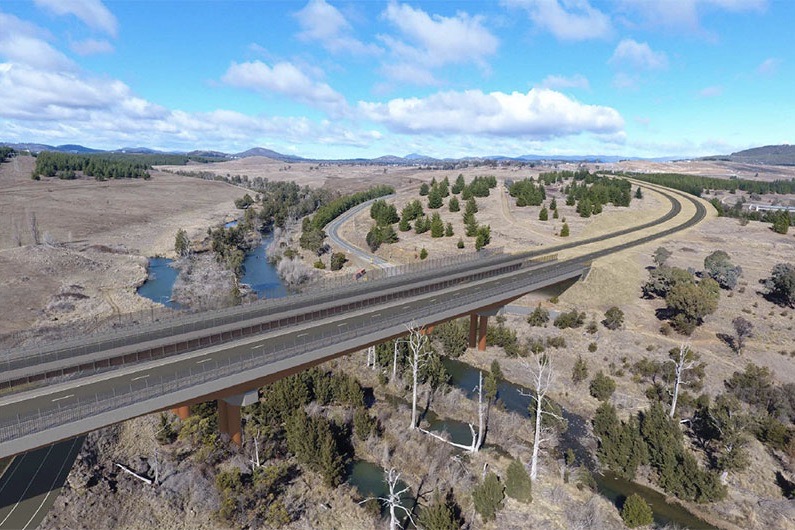
“The shortcomings in Molonglo’s planning to date does not inspire confidence that the government is capable of delivering good outcomes,” writes former planner MIKE QUIRK.
The most important information in Minister Steel’s recent press release “Molonglo to become the next town centre for the ACT” was that a community needs assessment is to be undertaken.

Molonglo residents have endured delays in the provision of services from poor planning and development co-ordination.
These have included:
- the delay in the release of the commercial space at the “town” centre site, which would have enabled the earlier provision of major supermarket and services space;
- failure to allow a supermarket of more than 1000sqm in the first local centre released in the district (Coombs) to address needs until the population of the district reached the threshold sufficient to support commercial space at the “town” centre;
- delays in the provision of community facilities and in constructing the Molonglo River Bridge. The consequence has been the additional travel imposed on Molonglo residents and a lack of a focal point.
The reclassification of the Molonglo Group Centre as a town centre is unlikely to have much impact on the level of residential, commercial and services provision in the district.
It is doubtful whether major office development will occur in Molonglo given the inability of the government to attract a major Commonwealth office to the Gungahlin Town centre.
If an opportunity did arise, the relative merits of Molonglo and locations including the Gungahlin or Tuggeranong town centres would need to be assessed. Consequently, it is essential Molonglo has good transport connections and quality public transport.
The usefulness of proposed community needs assessment requires reliable population estimates and care with the framing of questions used to ascertain community need.
The Molonglo District Strategy estimated the district would have some 25,000 dwellings with an associated population of 55,000. Of the dwellings, 40 per cent were identified as low density.
The ACT District Population Projections (2023), released shortly after the release of the Strategy, projected the district’s population to increase from 12,100 in 2022 to 83,140 in 2050.
Minister Steel’s press release identified a population of 70,000. There is an urgent need for the population estimates of Molonglo to be verified in regards to size, location, age structure and household type.
Higher populations would require the review and revision of infrastructure plans for the district, including those for a college, library, community centre, public transport, roads and bridges (including the proposed second river crossing), water, stormwater and sewerage networks, shopping centres, places of worship, parks and other recreational facilities.
Comparing information in the Concept Plan for the Molonglo Group Centre and Surrounds (consistent with the District Strategy) and the District Population Projections demonstrates the need for reliable estimates.
The comparison indicates the population projections assume an increase in density in most areas. In the concept plan, the capacity north of the river is estimated to be 9400 dwellings. At the average Molonglo 2021 dwelling occupancy of 2.2 people per dwelling, this results in a population of 20,700 in 2050.
The District Population Projections assume a doubling of population in the area by 2050 to 41,400.
How were such density increases determined? What impact does the increased population have on the composition, size and number of centres (currently a group centre and two local centres are proposed north of the river), the size, location and number of schools and transport and other infrastructure required?
Strategies seeking community input have to be a genuine attempt to ascertain need. Questions should be framed to elicit informed responses by reference to the cost and benefits of alternatives. This would reduce concerns about the results of the assessment being biased through the use of loaded questions designed to support outcomes such as much higher densities and expensive and unnecessary transport solutions.
If the community needs assessment results in generalised statements such as found in the 2018 Planning Strategy (“Canberrans want to see more diverse housing, lifestyle and transport options to support a wider range of people and households. They want better public transport connectivity, and an increased range of sustainable travel options”), then the range of policies available to achieve these outcomes need to be evaluated.
What happens in Molonglo has city-wide impacts. It is identified as the main greenfield supply area in Canberra over the coming decades.
Increasing its density will further constrain new detached housing supply in the territory, contributing to increased pressure on house prices. Such impacts need to be considered when formulating land release programs.
The shortcomings in Molonglo’s planning to date does not inspire confidence that the government is capable of delivering good outcomes.
Are its failures a result of it receiving advice from obsequious apparatchiks or a consequence of excluding advice that does not conform to pre-determined outcomes? Will it start to deliver strategies and infrastructure based on evidence? The election beckons.
Mike Quirk is a former NCDC and ACT government planner.
Who can be trusted?
In a world of spin and confusion, there’s never been a more important time to support independent journalism in Canberra.
If you trust our work online and want to enforce the power of independent voices, I invite you to make a small contribution.
Every dollar of support is invested back into our journalism to help keep citynews.com.au strong and free.
Thank you,
Ian Meikle, editor




![Teacher Vanessa Jones has been living in Higgins since 2001, and while she loves the area, she says she is “fed up” with the neglectful ACT government.
The Higgins shops have been completely abandoned, says Vanessa, preventing the opportunity for residents to have a community-centred space to socialise.
They only received bins nine months ago, she says, and requests for a water station and repairs to the bus station have gone unanswered.
“It’s very, very slow,” says Vanessa.
“I asked for the zebra crossing on Fullagar [Crescent] to be repainted, and we had to wait about six or nine months.
“That’s just such a long time… we pay a lot of rates.”
Vanessa says assistance from the government only seems to go to communities with time-rich and assertive communities, leaving places such as Higgins, where the majority of households have both adults working full-time and English may not be the first language of the family, at an automatic disadvantage.
“If you’ve got two people working, paying a mortgage, raising two or three kids, they don’t have the time,” says Vanessa.
Vanessa says the lack of attention quieter places such as Higgins is receiving is starting to look a lot like favouritism.
Read the full article on our website citynews.com.au
#canberra #canberranews](https://citynews.com.au/wp-content/plugins/instagram-feed/img/placeholder.png)
Leave a Reply